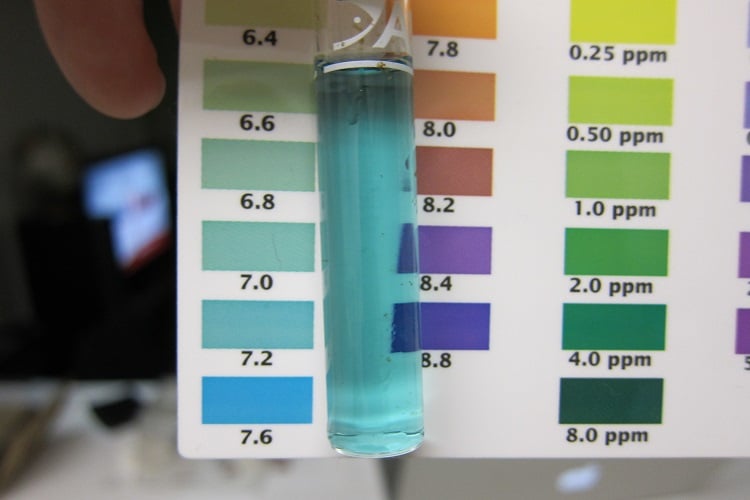Extreme Corals News and Updates
pH and Alkalinity in Reef Tanks
Harmony Below the Surface: Navigating the Interconnected Dynamics of pH and Alkalinity in Reef Aquariums
Dive into the delicate balance of pH and alkalinity in reef aquariums. Explore best practices for optimal health, coral growth, and long-term success.
by scott Shiles • January 12, 2024
Reef Tank Maintenance, All Corals
Maintaining a home reef aquarium requires a delicate balance of various water parameters, with pH and alkalinity playing pivotal roles. Understanding the interconnected dynamics of these two factors is crucial for the health and vitality of coral and other marine life. This blog explores the relationship between pH and alkalinity in reef tanks and outlines the best practices for adjusting these parameters individually and in concert with each other.
Interconnected Relationship:
pH and alkalinity share a close relationship in a reef tank. pH measures the acidity or basicity of the water, while alkalinity reflects its ability to resist changes in pH. The carbonate system, primarily composed of bicarbonate (HCO3-) and carbonate (CO3^2-) ions, heavily influences both parameters.
The process of calcification, vital for coral growth, relies on the availability of carbonate ions. As corals absorb carbonate ions to build their skeletons, it influences the pH of the surrounding water. Consequently, maintaining the right balance between pH and alkalinity is crucial for the health and stability of the reef tank.
Best Practices for Adjusting pH and Alkalinity:
Raising pH:
Buffer Solutions: Commercial buffer solutions containing bicarbonate and carbonate ions are effective in raising pH. These should be added gradually to avoid sudden spikes.
Aeration: Increasing water surface agitation through the use of air stones enhances gas exchange, helping to raise pH naturally.
Lowering pH:
Carbon Dioxide (CO2) Control: Regulating CO2 levels can help lower pH. Adequate ventilation and avoiding overstocking can prevent excessive CO2 buildup.
Acidic Additives: Carefully chosen acidic additives, such as those containing citric acid, can be used to lower pH. Regular testing and gradual adjustments are key.
Raising Alkalinity:Alkalinity Supplements:
Commercial alkalinity supplements containing carbonate and bicarbonate ions provide a reliable method for increasing alkalinity. Follow recommended dosage guidelines.
Water Changes: Regular water changes with a balanced salt mix contribute to stabilizing alkalinity levels.
Maintaining Balance:
Monitor Regularly: Regular testing using reliable reef aquarium test kits is essential for maintaining the delicate balance between pH and alkalinity.
Consistent Adjustments: Small, gradual adjustments are preferable to sudden changes. Regular monitoring allows aquarists to fine-tune parameters.
The interconnected dynamics of pH and alkalinity in a reef tank require careful attention and understanding. The delicate balance between these parameters is vital for the health and growth of coral and other marine organisms. By employing best practices for adjusting pH and alkalinity individually and in concert, hobbyists can create a stable and thriving environment for their home reef aquariums. Regular monitoring and adjustments ensure the long-term success of the tank and the well-being of its inhabitants. The interconnected relationship between these two parameters significantly impacts the health of coral and other marine life.
pH measures the acidity or basicity of water, affecting chemical processes within the aquarium. Alkalinity, on the other hand, refers to the water's ability to resist changes in pH. In a reef tank, the balance between pH and alkalinity is delicate and essential.
To maintain optimal conditions, regular testing is vital. High-quality test kits designed for reef aquariums are available, measuring both pH and alkalinity accurately. Consistent monitoring allows aquarists to make timely adjustments.
The importance of maintaining proper pH and alkalinity cannot be overstated. Corals, in particular, rely on stable conditions for calcification, the process by which they build their skeletons. Fluctuations in pH and alkalinity can hinder this process, leading to weakened coral structures and overall coral health decline.
To ensure a successful reef tank, hobbyists can employ various methods to regulate pH and alkalinity levels. Buffer solutions, additives, and water changes are common strategies. Buffer solutions help raise or stabilize pH, while alkalinity supplements replenish essential carbonate ions.
Water changes with a balanced salt mix can contribute to maintaining stable parameters. Additionally, monitoring and adjusting the tank's carbon dioxide levels can positively impact pH.
In conclusion, achieving and maintaining the proper balance of pH and alkalinity is essential for a successful home reef aquarium. Regular testing, careful adjustments, and an understanding of the interconnected nature of these parameters contribute to a thriving marine environment, promoting the health and longevity of coral and other inhabitants.

